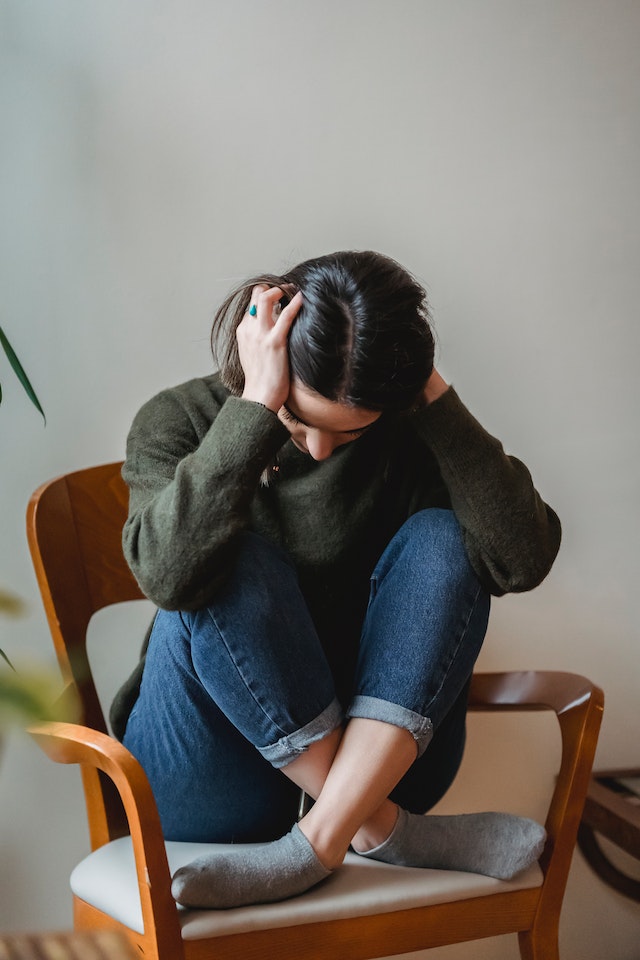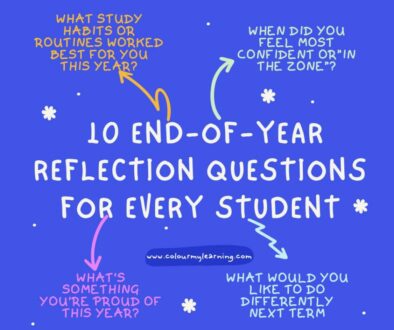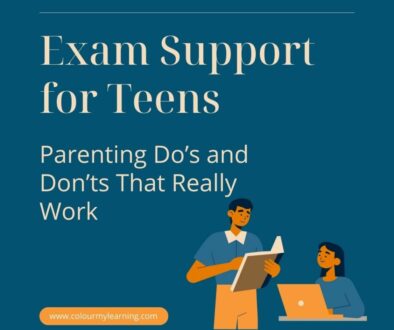9 Most Common Mental Health Issues Among Teens
The recognition and acceptance of teenage mental health issues has brought many previously not-talked-about challenges to the surface and forefront of society. While it has now become more acceptable to admit that one is struggling, being about to name or labelled what is actually going on, helps to identify the causes, symptoms and ultimately to be able to find treatment and resolution. We look at 9 most common mental health issues faced by teens.
There are a wide range of different mental health challenges that the wider community face, and many of are becoming more commonly accepted. Among teens, there are some mental health challenges that are more frequently occurring.
If you, or a friend, find yourself identifying with some or more of the symptoms below, please speak to an adult or get in touch with a health-care professional or therapist. If you find yourself struggling in any way, even if it is not listed below, please tell someone and seek help.
Related: How to Talk About Mental Health – Tips for Parents and Teens
Disclaimer: The following article is purely for informational purposes. It is not meant to provide medical or professional advice or diagnosis. If you or someone you know recognises some or more of the symptoms listed, please contact a relevant healthcare professional or therapist.
The Top 9 Most Common Mental Health Issues Affecting Teens Today
Below is a list of some of the more common mental health issues faced by teenagers.

1. Depression
Depression is more than just occasional sadness or mood swings. In teens, it can manifest as persistent feelings of sadness, irritability, or anger. Symptoms might include changes in sleeping and eating patterns, declining grades, a loss of interest in usual activities, and feelings of guilt or worthlessness.
It is a common and serious medical illness that negatively affects how you feel, the way you think, and how you act.
Symptoms
What to look out for:
- Emotional: Persistent feelings of sadness, hopelessness, pessimism, or apathy.
- Physical: Changes in appetite or weight, sleep disturbances (insomnia or oversleeping), fatigue, and aches or pains without clear physical causes.
- Cognitive: Difficulty thinking, concentrating, or making decisions. Memory problems might also arise.
- Behavioral: Withdrawal from social activities, reduced interest in hobbies and passions, neglecting responsibilities, and suicidal thoughts or actions.
Treatment
Typical treatment for depression can involve a combination of psychotherapy (especially cognitive behavioral therapy or CBT), medications (antidepressants), and lifestyle changes (like exercise and stress reduction techniques).
2. Anxiety disorders
This encompasses various forms of anxiety, including generalized anxiety disorder (GAD), panic disorder, social anxiety disorder, and specific phobias. Symptoms can range from excessive worrying to panic attacks. While it’s normal to feel anxious from time to time, anxiety disorders involve more than temporary worry or fear. For a person with an anxiety disorder, the anxiety does not go away and can get worse over time, interfering with daily activities.
Common Types
- Generalized Anxiety Disorder (GAD): Chronic anxiety and worry about various things, even when there’s little or no reason to worry.
- Panic Disorder: Characterized by recurrent panic attacks that can happen suddenly without warning.
- Social Anxiety Disorder: Intense anxiety or fear of being judged, negatively evaluated, or rejected in a social or performance situation.
- Specific Phobias: An intense, irrational fear of something that poses little or no actual danger.
Symptoms
What to look out for:
- Emotional: Excessive worry, restlessness, and feelings of being on edge.
- Physical: Rapid heartbeat, trembling or shaking, sweating, shortness of breath, dizziness, gastrointestinal problems, and headaches.
- Cognitive: Racing thoughts, uncontrollable overthinking, difficulties concentrating, and imagining worst-case scenarios.
- Behavioral: Avoidance of anxiety-inducing situations, repetitive behaviors, or rituals (in the case of OCD).
Treatment
Treatment for anxiety can involve psychotherapy (like CBT), medications (anxiolytics or antidepressants), and relaxation techniques (like deep breathing exercises or meditation).

3. Eating disorders
Disorders like anorexia nervosa, bulimia nervosa, and binge eating disorder are rooted in intense emotions and attitudes surrounding weight and food. These disorders can lead to severe physical health problems if left untreated. Eating disorders are serious and often fatal illnesses that cause severe disturbances to a person’s eating patterns and behaviours. Obsessions with food, body weight, and shape may signal an eating disorder.
Common Types
- Anorexia Nervosa: Characterized by weight loss, difficulties maintaining an appropriate body weight, and an intense fear of gaining weight.
- Bulimia Nervosa: Episodes of eating large amounts of food followed by behaviours to prevent weight gain, such as forced vomiting.
- Binge Eating Disorder: Similar to bulimia but without the regular use of purging, fasting, or excessive exercise.
Treatment
Can include nutrition education, psychotherapy, medical care, and medications.
4. Attention-Deficit/Hyperactivity Disorder (ADHD):
ADHD is neurodevelopmental disorder marked by consistent patterns of inattention, impulsivity, and/or hyperactivity. It is marked by persistent patterns of inattention and/or hyperactivity-impulsivity. It can affect a teen’s ability to focus in school and maintain organized tasks. Individuals with ADHD often find it hard to focus on tasks, might act without thinking, or can be overly active.
Symptoms
- Inattention: Forgetfulness, easily distracted, avoiding tasks requiring sustained attention.
- Hyperactivity: Fidgeting, inability to remain seated, excessive talking.
- Impulsivity: Difficulty waiting one’s turn, interrupting others.
Treatment
Treatment for ADD/ADHD often includes behavioural therapy or medication.
- Behavioural therapy: Helps patients develop coping skills and better habits.
- Medication: Stimulant and non-stimulant medications can help improve symptoms.
5. Obsessive-Compulsive Disorder (OCD)
Teens with OCD may experience unwanted obsessive thoughts and the compulsive need to carry out specific behaviors, like repeatedly checking something or excessive hand washing. Someone with OCD experiences unwanted repetitive thoughts and feels a strong urge to perform certain actions repeatedly, even if they know it might not make sense to others.
Symptoms
- Obsessions: Unwanted and intrusive thoughts that cause anxiety.
- Compulsions: Repetitive behaviors performed to reduce the anxiety caused by the obsessions.
Treatment
Typical treatment for OCD may include cognitive behavioural therapy and/or medication.
- Cognitive Behavioral Therapy (CBT): A type of therapy that teaches patients to recognize, understand, and change negative behavior patterns and thoughts.
- Medication: Drugs that help reduce the symptoms, often those that affect serotonin like certain antidepressants.
6. Bipolar disorder
Bipolar disorder was also previously known as manic depression. It causes extreme mood shifts ranging from mania (or hyperactivity) to depression. It is a mental health condition characterized by extreme mood swings that include emotional highs (mania or hypomania) and lows (depression).
Symptoms
- Manic Phase: Feelings of euphoria, inflated self-esteem, increased energy, reduced need for sleep, rapid and loud speech, racing thoughts, distractibility, impulsivity, and engaging in risky behaviours.
- Depressive Phase: Feelings of sadness, hopelessness, lack of energy, increased need for sleep, loss of interest in activities, feelings of worthlessness, and suicidal thoughts.
Treatment
Treatment for bipolar disorder often involves a combination of medications (like mood stabilizers) and psychotherapy.

7. Trauma-related disorders
Trauma-related disorders are mental health conditions triggered by experiencing or seeing a traumatic event. This includes post-traumatic stress disorder (PTSD) which can develop after a traumatic event. After witnessing or experiencing a severely traumatic event, some individuals might continuously relive that event and go out of their way to avoid reminders of it. Symptoms might include flashbacks, nightmares, and severe anxiety.
Common Types
- PTSD: Develops after exposure to a traumatic event.
- Acute Stress Disorder: Similar to PTSD, but symptoms occur immediately after the traumatic event and last for a shorter duration.
Symptoms
- Reliving the traumatic event (like flashbacks).
- Avoidance of anything related to the trauma.
- Negative changes in mood and thoughts.
- Changes in physical and emotional reactions (e.g., being easily startled).
Treatment
Treatment for trauma-related disorders can include CBT and/or medication.
- Trauma-focused Cognitive Behavioural Therapy (CBT): Helps patients process the trauma and develop coping strategies.
- Medication: Antidepressants can help treat symptoms.
8. Self-harm
Some teens engage in self-harming behaviours, which could be cutting, burning, or other forms of self-injury. It’s usually not a suicide attempt but rather a way to cope with emotional pain, stress, or overwhelming feelings.
Symptoms
- Cuts, burns, or bruises.
- Wearing long sleeves or pants even in hot weather to cover injuries.
- Emotional instability and expressions of feeling hopeless or overwhelmed.
Treatment
Typical treatment for self-harm can include psychotherapy or group therapy
- Psychotherapy: Talking to a therapist can provide coping mechanisms and strategies to reduce the urge.
- Group Therapy: Sharing feelings and strategies with others who self-harm can provide support.
9. Body Dysmorphic Disorder (BDD)
This is an intense obsession with a perceived flaw in physical appearance. It is characterized by the obsessive idea that some aspect of one’s body or appearance is severely flawed. It might lead teens to seek multiple cosmetic procedures or constantly check the mirror. Individuals with BDD are extremely preoccupied with perceived flaws in their appearance, which others might not even notice.
Symptoms
- Excessive focus on a perceived flaw.
- Seeking constant reassurance about appearance.
- Frequently checking the mirror or avoiding mirrors altogether.
Treatment
Treatemnt of BDD can include CBT and/or medication
- Cognitive Behavioural Therapy (CBT): Helps patients recognize irrational beliefs and develop a healthier self-image.
- Medication: Antidepressants can help reduce obsessive thoughts.
Understanding these types of mental health challenges is crucial for parents, educators, caregivers and teens themselves as early detection and intervention is essential for a teen’s well-being. If a teen is exhibiting signs of any mental health issue, please seek professional help promptly.
Support links
USA
- NIMH (National Institute of Mental Health): A reliable source for detailed information on most mental health disorders. https://www.nimh.nih.gov/
- Mayo Clinic: Offers comprehensive overviews of symptoms, causes, and treatments for many health conditions, including mental health issues. https://www.mayoclinic.org/diseases-conditions
- Anxiety and Depression Association of America (ADAA): A great resource for anxiety, depression, and co-occurring disorders. https://adaa.org/
- National Eating Disorders Association (NEDA): Provides resources and support for individuals and families affected by eating disorders. https://www.nationaleatingdisorders.org/
- Children and Adults with Attention-Deficit/Hyperactivity Disorder (CHADD): A useful resource for ADHD. https://chadd.org/
- International OCD Foundation: Offers information and resources about obsessive-compulsive disorder. https://iocdf.org/
UK
Top List of Mental Health and Well-being Help and Support Links for Young People (UK)
Hotlines:
USA
https://www.teenline.org/
https://www.apa.org/monitor/2023/07/peer-support-crisis-line-teens
UK https://teenagehelpline.org.uk/
Europe https://www.mhe-sme.org/library/youth-helplines/
Australia https://www.betterhealth.vic.gov.au/health/serviceprofiles/Kids-Helpline-services
Disclaimer: The article above is purely for informational purposes. It is not meant to provide medical or professional diagnosis or advice. If you or someone you know recognises some or more of the symptoms listed, please contact a relevant healthcare professional or therapist.
















